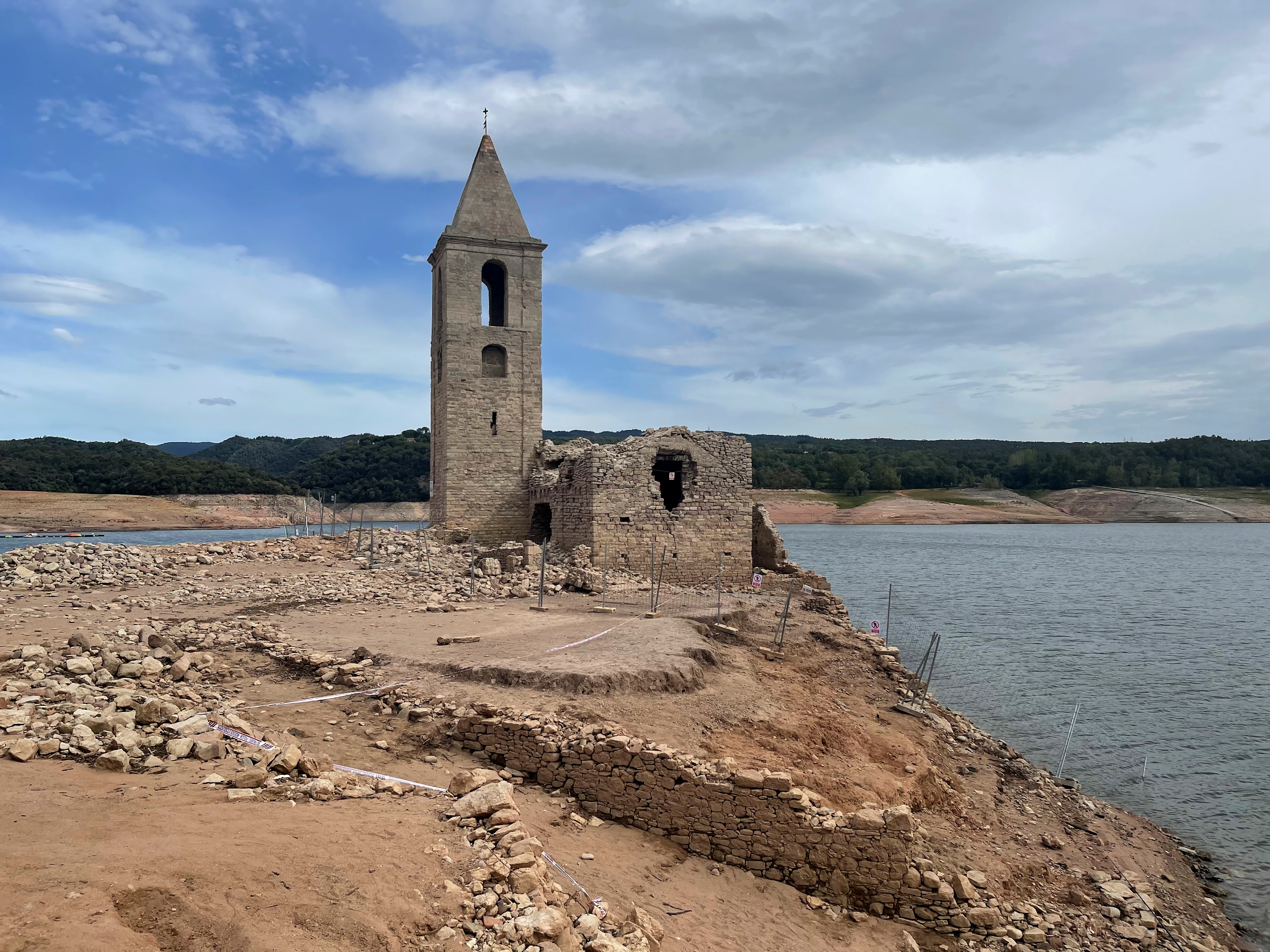Sau reservoir water to be removed to avoid mixing with mud at bottom amid drought
Move planned on prior occasions but never executed, will involve extracting fish to save them

Water at the Sau reservoir will be transferred to the nearby Susqueda reservoir in order to avoid mixing with the mud at the bottom.
Sau is at 15% of its capacity due to the ongoing drought in Catalonia – 0.3 hm3 of water is being transferred from Sau to Susqueda every day, and this amount will be increased to 0.5 hm3 daily.
Sau is the most iconic reservoir in Catalonia, because a town that was known as Sant Romà de Sau was sunken in the early 1960s to create the infrastructure, and the church and its bell tower still show when the water level is low. Have a listen to our recent Filling the Sink podcast about the drought and Sau reservoir here:
Now, the reservoir is storing 26hm3, and authorities believe that water begins to mix with the mud at the bottom of the reservoir at between 10 and 11 hm3, which would bring a loss of quality.
The Catalan Water Agency (ACA) wants to avoid a loss of water and believes that this move will mean making the most of this now scarce natural resource – at the moment, Susqueda is at 36.4% of its capacity and it is connected with Sau because they are being close to each other and share the same river, Ter.
The water in Susqueda is used to supply the population in the Girona counties and in Barcelona metropolitan areas.
Officials think that the fish living in Sau will have to be removed in order to be saved before emptying the reservoir, because the less water available, the less oxygen they have.
On prior occasions, such as 2008 when another serious drought struck Catalonia, plans to remove water from Sau were also drafted but spring rain halted them as the lack of water eased.
Overall, the water level of the reservoirs managed by the Catalan authorities stands at 28%, nearing the next threshold of alert, at 25%.
Check out this report on the reservoir in Sau that Catalan News published last September, when the overall level of such infrastructures across Catalonia had just dropped below 40%.